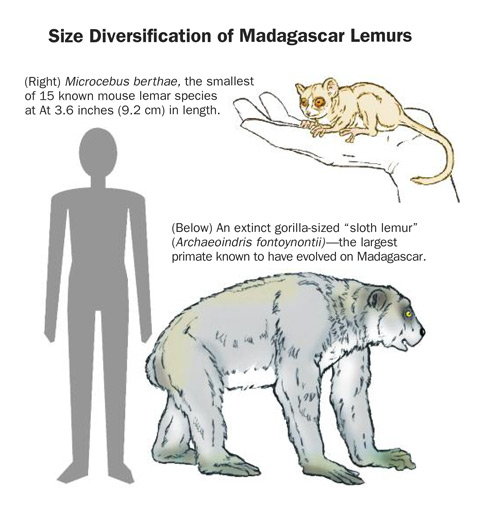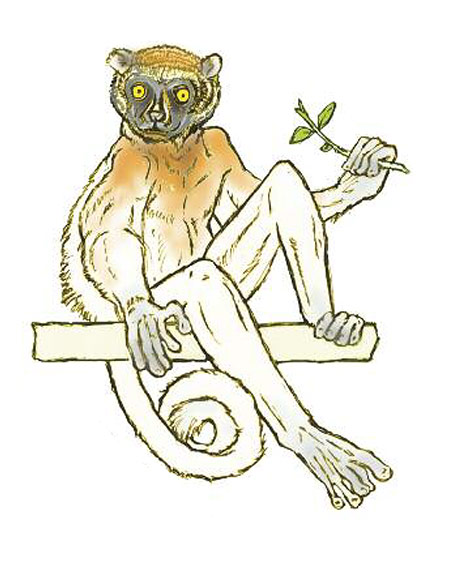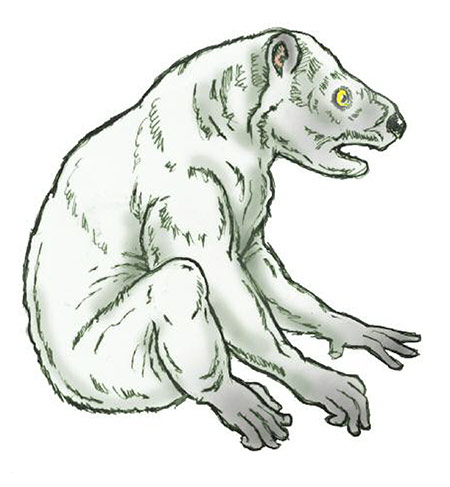Dr. Michael Behe is a professor of biochemistry at Lehigh University and a senior fellow of the Discovery Institute’s Center for Science and Culture, an organization noted for promoting the pseudoscientific theory of Intelligent Design (ID). He has now written his third book in attack of modern evolutionary theory: Darwin Devolves: The New Science About DNA that Challenges Evolution (2019, HarperOne). Although his views are well outside the scientific mainstream, this will not stop the efforts of the creationist and ID communities to use Behe’s work to convince school boards that ID is a valid scientific theory. Accordingly, the scientific and skeptical communities should not yield to the temptation to ignore Behe.1 Because his careful writing has the veneer of expertise, the public will look to scientists for responses to the points raised in Darwin Devolves, and I urge my colleagues to respond, not with insults, but with the only tool that matters, evidence.
At several points in Darwin Devolves, Behe makes clear his acceptance of the fact that life has evolved over billions of years and that all living things are related by universal common descent. He also acknowledges how mutation and natural selection have shaped organisms and achieved fitness gains in specific cases. Where he disagrees is the mechanism of how genetic change drives evolution of anything other than the smallest tweaks. Where science has shown that mutation and recombination provide the raw material for all of life’s diversity, Behe maintains that mutations can only break things and an intelligent intervention is required for innovation or even simple gains-of-function. To support his view, he spends a lot of time explaining, in mostly accurate detail, several cases of how mutations have diminished functions of genes with the result of improving survival, although his discussion is misleading, as I’ll explain.
As is his calling card, Behe holds modern evolutionary theory to an impossible standard, declaring it “insufficient” if we cannot pinpoint every point mutation, every intermediate genetic step, in what order, and in which ancient organisms. Meanwhile, Behe’s own theory is held to no standard whatsoever, enjoying a vaulted default status as any gaps in knowledge are simply filled by the designer. Fortunately, his reasoning failed to convince a federal district court in Dover, PA which blocked the school board’s attempt to insert mention of ID into science textbooks. It is worth noting that the lead witness on behalf of the plaintiffs was Kenneth Miller, a devout Catholic who has been often featured in the pages of this magazine for his tireless and erudite defense of the proper teaching of evolutionary science. As Judge John E. Jones III found, ID cannot be scientifically tested. Darwin Devolves continues this pseudoscientific tradition.
“You Keep Using That Word”
First, regarding the title, I had never heard the word “devolve” or “devolution” used in a scientific context until I read this book. Behe means it as the opposite of evolution, which doesn’t make much sense in biology. Outside of science, evolution can indeed mean an increase in complexity or some other form of progress or improvement. PokémonTM can evolve from a lower to a higher form, and so forth. In biology, evolution merely means change in a population over time. This is not a pedantic distinction. […]
Biological evolution does not imply increasing complexity or any kind of progress. Evolution is not directional or goal-oriented whatsoever. It is sloppy, meandering, reverses itself, and favors simplicity just as often as complexity, if not more so. We like to think of ourselves, perhaps the most complex creatures in some ways, as the pinnacle of evolution,2 but bacteria often go in the other direction and evolve to be extremely efficient. Since bacterial cells outnumber human cells even in our own bodies, it’s odd to believe that we are “more evolved” than they. To be sure, plenty of words are used differently in science, e.g., theory, certainty, confidence, etc., but a biochemist like Behe should know better. While it’s possible that his use of this strange word is tongue-in-cheek, he uses it in a specific way—to describe a loss of function—over and over again throughout the book and never indicates that he’s anything but serious. This betrays a very fundamental and all-too-pervasive misunderstanding of evolutionary theory.
Behe’s Misreading of the LTEE
The laboratory of Richard Lenski at Michigan State has been running an ongoing evolution experiment with E. coli cultures for over 30 years, representing 70,000 generations of species’ growth. Behe spends a great deal of time discussing this project, declaring it “the most definitive evolution experiment ever.” It may be, but not in the way that Behe imagines. The long-term evolution experiment (LTEE) was designed to be extremely simple, minimizing as many factors as technically possible. As Lenski explained to me, “It was not intended to mimic the complexities of nature, nor was it meant to be a test-bed for the evolution of new functional abilities.” Instead, temperature is kept constant, glucose is the main carbon source, and the cultures are free of competitors, viruses, antibiotics, and host defenses. This is a recipe for streamlining, not innovation, and Behe can be rightly faulted for not understanding this fact, especially since Lenski has spelled it out clearly in all of the papers and his other writings on the LTEE.3
And streamline these bacteria definitely have. All of the 12 replicate cultures have dramatically accelerated their growth and showed a gradual loss of many abilities necessary to thrive in other environments, abilities rendered expendable in these highly specific conditions. The LTEE is the microbial marathon of all marathons with the athletes rewarded only for their speed in an endless race, yet Behe is somehow surprised that the bacteria didn’t evolve creative new abilities unrelated to the selective pressures they are enduring. None of this is to diminish the power of the LTEE as a window to evolution in action, a project that has rightly earned Lenski membership in the National Academy of Sciences. The mutations that have accumulated in the various cultures are incredibly informative and demonstrate many examples of parallel evolution through different mutational paths. As Behe notes, all of the cultures have ditched their ability to use ribose sugar as a carbon source because in these conditions, it only slows them down.4 About half of the cultures have become “mutators” as their DNA repair systems have been disabled.5 There are literally scores of papers on these very interesting streamlining mutations related to bacterial growth and metabolism.
Nevertheless, even in an environment designed not to prod the bacteria toward new abilities, some interesting gains-of-function have indeed occurred. Lenski’s team has discovered variants of essential genes—not just dispensable ones—for the cell wall, DNA packaging and architecture, and a variety of tweaks that enhance, not diminish, the function of the encoded proteins.6 Perhaps the most exciting discovery is one culture’s new ability to import and metabolize citrate as a carbon source in an aerobic environment. Genome sequencing revealed that this ability emerged through a multistep rearrangement of genetic elements, bringing together disparate control regions and protein-coding regions into a new configuration.7 This is all incredibly unlikely, as evidenced by only one of the 12 cultures achieving this feat in more than 70,000 generations. Behe’s response to the observation that random mutations have achieved a new function is to call it a “side show.”
Of Finches and Lemurs
Behe also spends a great deal of time discussing the work of Rosemary and Peter Grant of Princeton University, who have conducted an impressive body of research on the evolution and diversification of the 15 species of finches in the Galápagos islands.8 The thrust of Behe’s discussion is that the various finches have diversified very little from the ancestral Tiaris population, some two million years ago. While this is true, it is not clear why Behe feels that this is a disappointment. Two million years is not a terribly long time by evolutionary standards and most animal species alive today are anatomically similar to their forebears from millions of years ago (think sharks).

Behe uses finches as an example of how animal lineages, without supernatural intervention, can achieve only the tiniest of variations through the standard “Darwinian” forces. (Behe uses the term Darwinian very frequently, as if evolutionary science hasn’t progressed since the mid-19th century. Although Darwin—along with Alfred Russel Wallace— was the first champion of natural selection, we now appreciate a whole host of evolutionary forces including mutation, recombination, hybridization, horizontal transfer, and genetic drift.) Behe laments that the finches didn’t develop whole scale body rearrangements, à la the Cambrian “explosion.” Nevermind that the Cambrian diversification took more than ten times as long and involved smaller, simpler, and faster reproducing organisms. The larger issue is that, when the finch ancestors arrived on the islands, they were already occupied by all kinds of creatures, including other kinds of birds. Their only path to success was to just keep doing what they already knew how to do. Diversification occurs when animals explore unoccupied niches and adapt to them. As famed Swedish geneticist Leif Andersson told me, “The finches didn’t evolve into owls or hawks because there were already owls and hawks there!”

The crowned sifaka (Propithecus coronatus) grows to 3 feet (1m) in length, including the tail. It lives in treetops, eating leaves, fruits, and flowers.
Behe very nearly catches his own error. Although pale in comparison to the Cambrian explosion, the adaptive radiation of the lemurs of Madagascar is one of the most spectacular examples of animal diversification. Because it happened much more recently, scientists such as Ian Tattersall have studied it in great detail.9 What they’ve found is that, after a small group of primates first colonized the isolated island around 50 million years ago, they exploited every possible habitat and food source on the island. By some counts, there are well over 100 species of lemurs and sifakas organized into 15 genera within 8 families, including the smallest known primates and nearly the largest. (The extinct sloth lemur was nearly as large as a gorilla!) There are burrowers, leapers, grazers, climbers, and everything in between.

The Aye-Aye (Daubentonia madagascariensis) uses its thin middle finger to tap on trees to listen for echos from hollows that contain insects or larvae. It then chews a hole and uses its long fingers to fish the larvae out.
Lemurs have accomplished this impressive adaptive radiation because they were free to inhabit the ecological niches normally occupied by other animals. With no rodents on Madagascar (initially), the mouse lemurs emerged. With no true sloths, we have the sloth lemur. There is a mongoose lemur, a Koala lemur, monkey lemurs, and the aye-aye is sometimes called the woodpecker lemur! Behe begrudgingly acknowledges that the diversification of lemurs has reached the taxonomic level of family, something he claims that unguided evolution can’t do, but he declares that it “may be an artifact of classification.” Is Behe suggesting that a mouse lemur and a crowned sifaka belong in the same family? Behe also boldly asserts that, “[lemurs] have no distinctive traits that aren’t shared with other primates.” When I shared that quote with Tattersall, he nearly choked on his empanada. Of course, Behe also allows for the possibility that all of this adaptive potential was provided by “intrinsic, intelligently provided information carried by the ancestor of lemurs.” He fails to explain how that hypothesis might be tested.

Koala lemurs (Megaladapis) are thought to have been hunted into extinction by early human settlers of Madagascar. They are the only primate with eyes located on the sides of the skull, and their hands and feet are adapted for tree climbing. They weighed as much as 110 lb (50k) and measured between 4 to 5ft (1.3 to 1.5m in length).
In the 1970s, a massive drought devastated the Galápagos and the Grants were there to observe how the finch populations plummeted and then rebounded.10 What they observed was incredibly rapid adaptation to dwindling food resources, mostly in the shape, hardness, and flexibility of their beaks. Then, as the rains returned and the flora and fauna bounced back, the finches settled back into their pre-drought morphology. Like the LTEE, this is evolution in action, this time with large animals in the wild and in just dozens of generations. Behe, however, calls this “trivial” and declares that the drought “simply eliminates a segment of the population, and the remainder is left to reproduce.” He is so close to getting the point.
Innovation by Random Mutation
The central claim of Darwin Devolves is that unguided mutations and genetic rearrangements can only diminish the function of the genes in which they occur, although they can sometimes bring fitness gains when they do so. This claim is not new, even for Behe, as his second book, The Edge of Evolution, made this same point. Importantly, Behe’s many public defenders, almost none of whom are scientists, frequently misrepresent his position and claim that he is merely saying that mutations usually break things and that mutations that enhance gene or protein function are very rare. This is a key distinction because if Behe actually claimed that, he would be perfectly in line with mainstream evolutionary science. It has long been known that a random alteration in something as intricate as coded genetic instructions is usually going to damage those instructions. What Behe actually says is much stronger than that: he claims that random tinkering can never be the source of innovative or even improved biomolecular functioning unless every single step of the way brings clear fitness gains. He backed himself into this position more than 20 years ago and he emphatically defends it in Darwin Devolves.
Unfortunately for Behe, the evidence is not on his side. As Lenski, Joshua Swamidass, and I wrote in Science last month,11 Behe continues to ignore the abundance of research that undercuts his claims, some of which has been publicly pointed out to him. In perhaps the most dramatic example, a multisubunit complex called T-urf13 was cobbled together from various pieces of noncoding DNA in the maize mitochondrial genome.12 This is a key example because the T-urf13 complex is a gated ion channel, a molecular structure that Behe specifically held up as an example of irreducible complexity in his first book, Darwin’s Black Box. That this structure was formed through several random DNA rearrangement events is nothing short of incredible, but there it is. Arthur Hunt published a detailed description of the evolution of T-urf13 at Panda’s Thumb more than ten years ago.13 Behe is surely aware of it,14 yet he doesn’t even attempt to engage with this clear example of random tinkering accomplishing exactly what he claims it cannot.
In his opening example of so-called “devolution,” Behe describes a paper about the evolution of polar bears from their brown bear ancestors and claims that the mutations involved mostly damaged proteins along the way. Once again, Hunt pointed out that he misread the source paper and got the science very wrong. Lenski, Jerry Coyne, and I have explained his errors in detail elsewhere.15 Briefly, even the gene he chose to highlight, APOB, which is involved in the clearance of cholesterol from the blood, appears to be enhanced in polar bears as a key adaptation to their high-fat diet. Devolution indeed.
The neutral theory of molecular evolution holds that, through mutation and recombination, organisms accumulate a great deal of molecular diversity that is selectively neutral. This diversity provides the raw material for potential future adaptation and is the closest evolution comes to “thinking ahead.” Separate mutations do not need to happen in the same organism at the same time in order to eventually synergize.
For example, the toxic wood preservative pentachlorophenol (PCP) is notoriously stable and yet, bacterial species in the genus Sphingomonas have evolved to digest this hardy molecule.16 The surprising part is that they have recruited two separate enzymatic pathways to accomplish this, neither one of which is sufficient on its own. An impressive feat, especially since PCP was first introduced to the environment less than 90 years ago. Other bacteria have evolved to eat vinyl, plastics, and the paint on supposedly sterile operating room walls. In the microbial world, the evolution of new functions is practically mundane.
In 1918, H. J. Muller first proposed his two-step model of evolutionary innovation: “Add a part; make it necessary,” which preempted Behe’s theory of irreducible complexity by 80 years and remains unchallenged. The Mullerian model received a powerful update in 2012 when Dan Andersson presented the refined version: “Innovation, Amplification, and Divergence.” This model showed its potential in computer models and was tested in the laboratory.17 By applying specific environmental pressures, the researchers coaxed spontaneous mutants of Salmonella enterica to evolve the ability to synthesize the amino acid tryptophan. The bacteria did this through the duplication and subsequent mutation of a gene the bacteria had previously used for the synthesis of a different amino acid, Histidine, just as the model predicted. Innovation, amplification, and divergence, all in under 3,000 generations.
Mind Your Business
The last chapter of Behe’s book is dedicated to a breathless attack on the entire discipline of the philosophy of mind. His appreciation for philosophy seems to begin with the ancient Greeks and ends with Medieval philosophers like Aquinas, and he’s unimpressed by any progress since. In fact, strung throughout Behe’s body of writing is a not-so-subtle lament of modernism and nostalgia for a simpler age when religious and scientific thinking were not relegated to separate realms of authority. Behe is clearly qualified to discuss the molecular details of the science he scrutinizes, but his utter lack of solid grounding in modern philosophy is matched only by his disdain for it. In broad strokes, he attacks with unlettered jabs such as “That’s crazy!” “a silly suggestion” and “any version of materialism undermines common sense.” These potshots are lobbed at ideas as uncontroversial as the mind being a product of the brain. While he is under no intellectual obligation to agree with the likes of Francis Crick, Linda and Paul Churchland, Daniel Dennett, and John Searle, he provides no evidentiary foundation for his dismissive treatment of their contributions.
Bizarrely, the first three examples Behe uses to advance his position that we can know that other minds exist are Cornelius from The Planet of the Apes, Nick Marshall from What Women Want, and Yoda from Star Wars. When he gets around to offering a real-world example, it is of a tragic case of locked-in syndrome which, if it argues anything, it’s that consciousness, whatever it is, might persist in an otherwise paralyzed person. If Behe believes that minds and thoughts are real things separate from the movement of electrons, he is certainly not alone, even among contemporary philosophers. Instead of advancing that position by exploring published research, he lampoons some of the most respected scholars of our age and insults an entire field of study. I consider this a serious offense, deliberately stoking the flames of the raging anti-intellectualism that is threatening our current age.
In Darwin Devolves, Michael Behe continues to dig himself further into the hole he opened 20 years ago with Darwin’s Black Box. This time, his shovel is molecular sequencing, but what he omits is far more telling than what he discusses. The word recombination appears only once in this book (outside of the notes) and neither exaptation nor horizontal gene transfer are mentioned at all. As these are key forces in generating diversity and innovation, I’d say they merit discussion, especially by someone intending to challenge their importance. Also absent is any discussion of Muller’s two-step model (or its recent update) or Allen Orr’s groundbreaking work on speciation. The list could go on for pages. Perhaps the most egregious of Behe’s omissions is his repeated assertions that his previous claims about irreducible complexity stand unchallenged. He may find the hundreds of published refutations unconvincing, but the onus is on him is to explain why. Instead, he pretends they don’t exist. While big ideas are often improved through sharp criticism, Darwin Devolves misses its mark, not so much for all that it says, but for all that it doesn’t. ![]()
About the Author
Dr. Nathan H. Lents is Professor of Biology at John Jay College of the City University of New York, where he is also the director of the honors programs. He also maintains The Human Evolution Blog and hosts the science podcast This World of Humans. He is the author of Not So Different: Finding Human Nature in Animals and Human Errors: A Panorama of Our Glitches, from Pointless Bones to Broken Genes.
References
- https://bit.ly/2CPIjOb
- Lents, N. H. 2018. Human Errors: A Panorama of Our Glitches, from Pointless Bones to Broken Genes. Houghton Mifflin Harcourt.
- Fox, J. W., and Lenski, R. E. 2015. From here to eternity— the theory and practice of a really long experiment. PLoS biology, 13 (6), e1002185.
- Cooper, V. S., Schneider, D., Blot, M., and Lenski, R. E. 2001. Mechanisms causing rapid and parallel losses of ribose catabolism in evolving populations of Escherichia coli B. Journal of Bacteriology, 183(9), 2834–2841.
- Sniegowski, P. D., Gerrish, P. J., and Lenski, R. E. 1997. Evolution of high mutation rates in experimental populations of E. coli. Nature, 387 (6634), 703.
- Maddamsetti, R., Hatcher, P. J., Green, A. G., Williams, B. L., Marks, D. S., and Lenski, R. E. 2017. Core Genes Evolve Rapidly in the Long-term Evolution Experiment with Escherichia coli. Genome biology and evolution, 9 (4), 1072–1083.
- Blount, Z. D., Barrick, J. E., Davidson, C. J., and Lenski, R. E. 2012. Genomic analysis of a key innovation in an experimental Escherichia coli population. Nature, 489 (7417), 513.
- Grant, P. R., and Grant, B. R. 2002. Unpredictable evolution in a 30-year study of Darwin’s finches. Science, 296 (5568), 707–711.
- Tattersall, I. 1982. The Primates of Madagascar. New York, NY: Columbia University Press.
- Boag, P. T., and Grant, P. R. 1981. Intense natural selection in a population of Darwin’s finches (Geospizinae) in the Galapagos. Science, 214 (4516), 82–85.
- Lents, N. H., Swamidass SJ, and Lenski RL. “The End of Evolution? A biochemist’s crusade to overturn evolution misrepresents theory and ignores evidence.” Science. 08-Feb 2019. v363(6427): p590.
- Kennell, J. C., and Pring, D. R. 1989. Initiation and processing of atp6, T-ur f13 and ORF221 transcripts from mitochondria of T cytoplasm maize. Molecular and General Genetics MGG, 216 (1), 16–24.
- https://bit.ly/2GYYPQ4
- In a forum on Peaceful Science, Bill Cole from Uncommon Descent, claimed that Behe told him in an email exchange that he was aware of T-urf13 and that Darwin Devolves would address it with an expansion of ID theory. He did not do so, but this is a second-hand report of his claim that he would. See https://bit.ly/2GZnlAD
- https://thehumanevolutionblog.com/2019/02/12/behe-polar-bears/
- Yang, C. F., Lee, C.M., and Wang, C. C. 2006. Isolation and physiological characterization of the pentachlorophenol degrading bacterium Sphingomonas chlorophenolicia. Chemosphere, 62 (5), 709–714.
- Näsvall, J., Sun, L., Roth, J. R., and Andersson, D. I. 2012. Real-time evolution of new genes by innovation, amplification, and divergence. Science. 338(6105), 384–387.
This article was published on March 6, 2019.

















My disdain for philosophy of mind is the exact opposite of Behe’s. Both dualism and straightforward panpsychism have been disproved ever since we’ve discovered the Higgs boson more than half a decade ago (see Sean Carroll on souls and Sabine Hossenfelder on panpsychism on their respective blogs), and even before then the scholarship of dualists have been horrendous. Current forms of panpsychism, as far as I can tell, are no more than syntactically correct sentences with no real meaning, e.g. as panpsychist Phillip Goff put it, “spin is consciousness”.
Epiphenomenalism is trivially disproved by taking note of your consciousness and saying “I am concious”, thus making your consciousness have a causal effect.
That only leaves physicalism unscathed among the major branches of philosophy of mind, i.e. the mind is what the brain does.
-Ryan
Pasteur was a very religious Christian who thought life could not originate naturally but needed outside, supernatural intervention from god. His experiments were biased and designed more to prove his beliefs than to find out what was happening. His opponent, Henri Charlton Bastian, did many more experiments, with much better design, and proved life self-organizes all around us all the time. Pasteur was accepted by the French Academy for religious and nationalistic reasons, not because his experiments were more convincing.
http://www.hup.harvard.edu/catalog.php?isbn=9780674009998
Franscisco Redi is another example of faith pretending to be science. Redi was a Catholic priest and his experiments were really intended as demonstrations of the power of god to create life where nature could not do so. They are frequently cited as refuting spontaneous generation, but in reality, they show more about how science is often entwined with politics and religion.
Sidney Fox and his more recent followers have it that life could only happen under conditions not found on earth today. That is the exact opposite of my claim that life self-organizes under modern conditions and can be observed coming into existence.
Microscopic single-celled organisms arise constantly and macroscopic multi-cellular plants and animals, the latter category including humans, form under less common but still ordinary conditions directly from non-living materials without any ancestors.
For a non-Darwinist view of evolution see
https://theanarchistlibrary.org/library/petr-kropotkin-mutual-aid-a-factor-of-evolution.lt.pdf
Tzindaro, I am going to hazard a guess that Sidney Fox beat you to the punch by 40 or more years.
Nathan, nice article.
Spontaneous generation was the accepted explanation for “lower” forms of life (including rodents) through part of the 19th century. Likewise a quasi-biblical interpretation of geology was standard. These prejudices had to be overcome gradually by a great deal of observation and experiment. Many individuals had to change their own minds in the face of the evidence – Darwin was one of these. Those who claim that the modern scientific explanation represent some kind of arbitrary prejudice have got it backwards, and ignore the history of science.
Behe apparently claims that every step of evolution is guided by intelligence, but actually the paths that have clearly been followed very often do not make much sense if the creator (or whoever) had some end in mind. In other words, evolutionary paths are largely random. This point was really made by Darwin himself, but also by more recent explainers such as Dawkins.
Spontaneous generation?! I feel like I am in a time capsule, back to the beginning of the 19th century, before Pasteur and Tyndall had performed their demonstrations …
To Tzindaro: “any real scientists here,” “not mere science groupies,” this sounds suspiciously like the no-true-scotsman fallacy. This is how most pseudo-science cranks operate. Do you have the courage to stand up to big science? Will you spinelessly regurgitate the orthodoxy, or will you have the integrity to admit that my theory is the only possibility? Be a man! Ignore all that annoying evidence!
To Colin:
Excellent point, and well said. Thank you!!
In answer to Dave: ID does not ‘have’ something at the beginning, it ‘postulates’ or ‘imagines’ something at the beginning. It has no proof to back this up. Evolutionary science admits that it does not yet know what initiated the beginning of life on this planet, but does not call this unknown ‘nothing’.
Tzindaro’s witnessing of ex nihilo creation would be worth exploring if it were true, but he does not provide any verifiable way of proving or disproving what he asserts.
First, let me mention that I happen to be an atheist and consider the Bible to be nothing but fiction and nothing remotely resembling the Judeo-Christian god exists, so please do not dismiss what I say as motivated by religion.
I think the current concept of so-called evolution is simply dead wrong. The anti-evolutionists have done a good job of pointing out the flaws in the Darwinian Hypothesis and there is no need to repeat them here. Darwin made a good attempt to explain biodiversity using only 19th century knowledge and under the influence of his times and culture, but his ideas belong in a museum today. In fact, the earlier theories of Lammark come much nearer to the truth.
Having personally witnessed several examples of what used to be called spontaneous generation, the formation of living organisms, both plant and animal, directly from non-living materials, and having observed that the organisms so formed are not formed at random, but fit into the surrounding ecosystem and are adapted to the other life forms in the vicinity, and that this phenomenon includes not only microscopic single-celled organisms, but large, complex forms, both animal and plant life, sometimes of already existing species and sometimes of new species not seen before, I have come to the conclusion that the failure of modern scientists to recognize spontaneous generation as a fact of nature has acted as a block preventing the scientific community from understanding how the natural world continually creates new forms of life that thereafter reproduce in the well known manner.
The assumption that all living things have ancestors has to be abandoned before a really scientific explanation for biodiversity can be developed. Such a theory, based on a recognition of on-going creation of life every day, in swamps, soil, and the oceans, and in fact, all around us, is the essential first step.
Which species forms depends on the environmental conditions surrounding it while it is forming, and since no single species forms in isolation, the actual unit of evolution is not the individual species, but the ecosystem in which it is embedded.
All this can be demonstrated in a lab by observations of microscopic organisms forming from highly sterilized carbon dust in sterile nutrient solution with potassium chloride and some other added materials. Simply by holding a colored glass filter between the sun and the microscope stage while the newly created organisms are forming, one can see that which species forms depends on the wave length of light it is exposed to. One can hypothesize that slight changes in the wave length of solar output are responsible for the vast changes in the biosphere in the prehistoric past.
I do not expect any of the Darwin-freaks who read this to believe me, but if there are any real scientists here, not mere science groupies, perhaps someone could do some actual research instead of just citing orthodox theory.
At least ID has something in the beginning rather than nothing, a logical and therefore empirical impossibility.
ID calls your bluff, sees your nothing, and raises you something.
Thank you for this article about Behe’s latest book. It is yet another example of misrepresentation and mis-interpretation driven by an agenda.
The article was well written and provides me with enough info to respond to students who bring it up before I direct them to a biology professor.